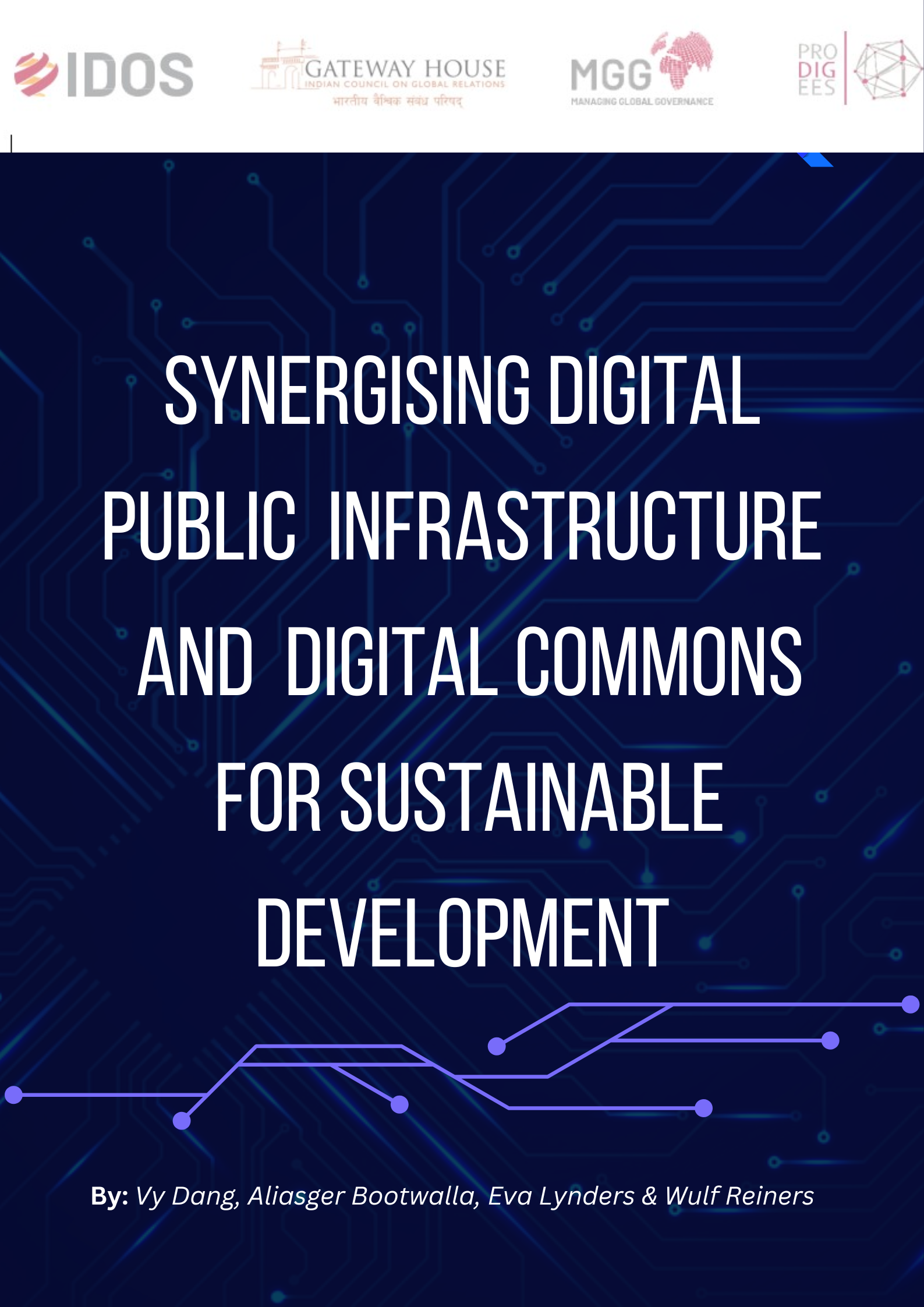India’s G20 presidency has made digital public infrastructure (DPI) a central offering, showcasing the country’s beneficial experience of technology and digitalisation and its relevance to countries of various income levels. Expositions on DPI focus on it being inclusive, trustworthy, and serving the global good, as well as ways in which DPI can support the Sustainable Development Goals (SDGs). India has taken a pioneering role in developing an effective DPI ecosystem through India Stack. Its vast and valuable experience offers learnings for other countries and world regions.
Similar discussions are taking place in other regions, notably within the European Union (EU). The EU is at the forefront of the regulation of digital markets and services, introducing “digital commons” as an innovative model for shared and collective governance of essential digital resources. The EU has demonstrated a strong commitment to including digital commons in its digital strategy, aiming to assert the Union’s values and norms, to bridge geographic gaps and accelerate the progress towards SDGs.
In its report “The Age of Digital Interdependence”, the UN Secretary General’s High Level Panel on Digital Cooperation coined the term “digital public goods” for digital technologies and content that can accelerate the achievement of the SDGs if they are “freely and openly available, with minimal restrictions on how they can be distributed, adapted and reused” (UN, 2019). In late 2019, the governments of Norway, Sierra Leone, UNICEF and iSPIRT, an Indian non-profit organisation that has played a vital role in the development of DPIs in India, formally initiated the Digital Public Goods Alliance as a follow-up to the High-level Panel.
Given the immense potential of DPIs, digital commons and digital public goods, especially in the context of advancing SDGs, there is a pressing need to align these diverse perspectives, experiences and debates. Such alignment will foster the development of shared visions and the effective utilisation of DPIs and digital commons to establish “an open, free, and secure digital future for all” (UN, 2023). Additionally, this synergy will contribute to the ongoing discussions surrounding the UN Global Digital Compact, planned for ratification during the Summit of the Future in September 2024.
Nevertheless, a significant challenge in this endeavour is a terminological confusion. This article aims to address this confusion by unpacking the terms “DPIs”, “digital commons”, and “digital public goods”, and considering their use by India and within the EU. India’s DPI experience has been mainly practitioner-led, and a body of academic work has yet to be developed. There is also only limited literature on the relation between DPIs and digital commons, and between DPIs and digital public goods in advancing SDGs. We identify the shared and compatible elements of DPIs and digital commons and highlight areas where India and the EU converge and diverge in their policies and approaches. We also advocate for the G20’s role in facilitating consensus building and promoting knowledge exchange on DPIs and digital commons.
The paper is structured as follows. It begins by introducing the concept of DPI and its core elements, presenting India’s approach and experience in this domain. It then examines the concept of digital commons, outlining the EU’s approach and priorities. Following that, the paper elides these two concepts, arguing that DPIs and digital commons should be designed and implemented as digital public goods to fully unlock their potential as drivers of progress toward achieving SDGs.

Read the full paper here.
Vy Dang is a researcher, German Institute of Development and Sustainability (IDOS).
Aliasger Bootwalla is Manager for Research, Media and Partnerships, Gateway House.
Eva Maria Lynders is Researcher, German Institute of Development and Sustainability (IDOS).
Wulf Reiners is the Head of Managing Global Governance (MGG) Programme, German Institute of Development and Sustainability (IDOS).
This paper has been published by Gateway House and the German Institute for Development and Sustainability (IDOS), under the Managing Global Governance and PRODIGEES programmes.
Support our work here.
For permission to republish, please contact outreach@gatewayhouse.in
©Copyright 2024 Gateway House: Indian Council on Global Relations. All rights reserved. Any unauthorised copying or reproduction is strictly prohibited.


